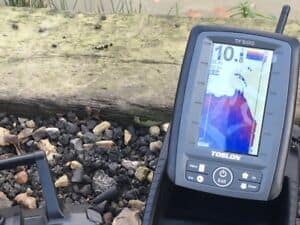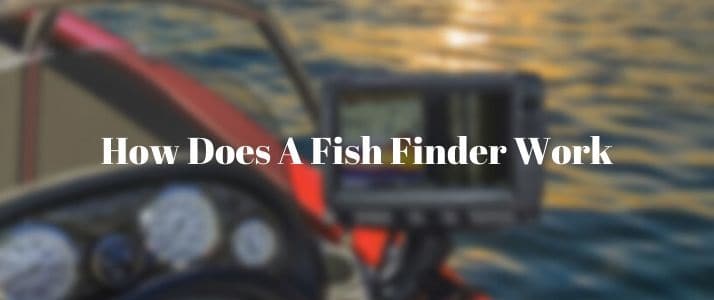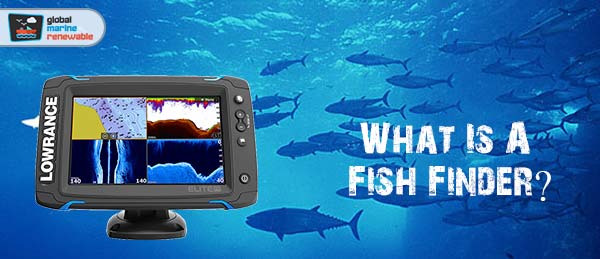If you are trying to locate a fish or school of fishes underwater for whatever reason, using a fish finder will help ease the process.
Trust me, it is a cool device to help anglers get an idea where the fishes are.
Whether you are a hobbyist or a professional, getting a fish finder and using it the right way in your fishing trips will uplift your catches for sure. In this article, I’ll tell you what exactly is this device and how it works for you.
So, without further ado, let’s get your feet wet in it.
Table of Contents
What is a fish finder?

A fish finder is a device or instrument that is used to detect the location of a fish under water. This can be used by boatmen, fishermen or for recreational fishing.
While the boat or ship is moving on the water, this instrument displays in the pilot house what you cannot possibly see under the water, and that is the location of the fish or school of fishes and some characteristics like the size, shape and composition of the fish/fishes.
How does a fish finder work?

This device works by transmitting sound waves to the sea and detecting reflected pulses of sound energy. This process is similar to that of sonar, and hence this device is called a high-frequency sonar device.
Fishfinder transmits an electrical impulse which is changed to sound waves. These electrical impulses are converted to sound waves by using either a hydrophone or a transducer.
When the sound waves sent to the sea hits a fish, it reflects back to the screen giving information on the size, shape and composition of the fish or school of fishes as the case may be. It also gives information on the distance of the fish from the reflected wave.
These images displayed on the screen to represent individual fishes with a small icon providing details about the activity of the fish underwater to the fisherman.
Recently, this device has been upgraded and now has a full-colour HD screen or LCD unit. However, the accuracy of this device is dependent on the frequency and the strength of the pulse that the device transmits.
There is a transmitter located on the boat that sends signals in the waves. The system uses sonar technology to reflect the waves back to the transmitter.
The reflected waves are then recorded, and a signal goes back to the screen. This process can be repeated for as much as 39-40 times per second and eventually results in the display of the bottom of the ocean versus time.
With the advancement of technology, electronics these days allow for integration between the fish finder device, marine radars, compass and GPS navigation systems.
To double assure you that the signals it receives are not false, the device displays the waves coming after getting reflected from fishes differently as compared to those coming from stones, corals or other animals.
A fish finder is an important electronic device needed to maximize the fun and efficiency of any fishing trip. It is used for either of these fishing activities; commercial or leisure fishing.
The fish finding device comes in different sizes, colors and descriptions. Before you make use of it, make an effort to read the manual, so you know how it works and that will make it easier for you to use giving you a successful fishing trip!
How Does A Fish Finder Work FAQ
Q1. How to choose the correct fish-finder?
To choose a fishfinder, consider the type of unit—whether it includes GPS and is part of a boat-wide network, size of the fishfinder’s footprint, resolution of the display, how much transmitting power you need, and what frequencies will work best in the inland, coastal or deep-water environment where you fish.
Q2. Does the transducer come included?
Many transducers are purchased separately. They don’t come inside the package most of the times.
Q3. What about CHIRP or broadband fish-finders?
The newest style of broadband fish-finders, commonly called CHIRP don’t transmit on just one or two frequencies.
These devices transmit less peak power than a conventional fish finder, but their wide-band, frequency modulated pulses can be very long in duration and put 10-50 times more energy into the water.
Q4. Are they expensive?
Yes. They are an expensive system, but you can have it as a good long-term investment for your fishing journeys.
Q5. How much power do they transmit?
The power of a fish-finder is expressed in watts RMS. Power directly relates to how well you see in the silt-laden water, view down to greater depths, and successfully resolve separate targets and bottom structure.
A 500-watt fish finder should have plenty of power for most coastal applications.
Fish Finder my Final Words
To conclude, fish finder isn’t a piece of equipment every angler will want to have. It is pricey and cool!
If you are a regular fishing enthusiast and want to boost the number of your catches, it might be a good investment to have one.
